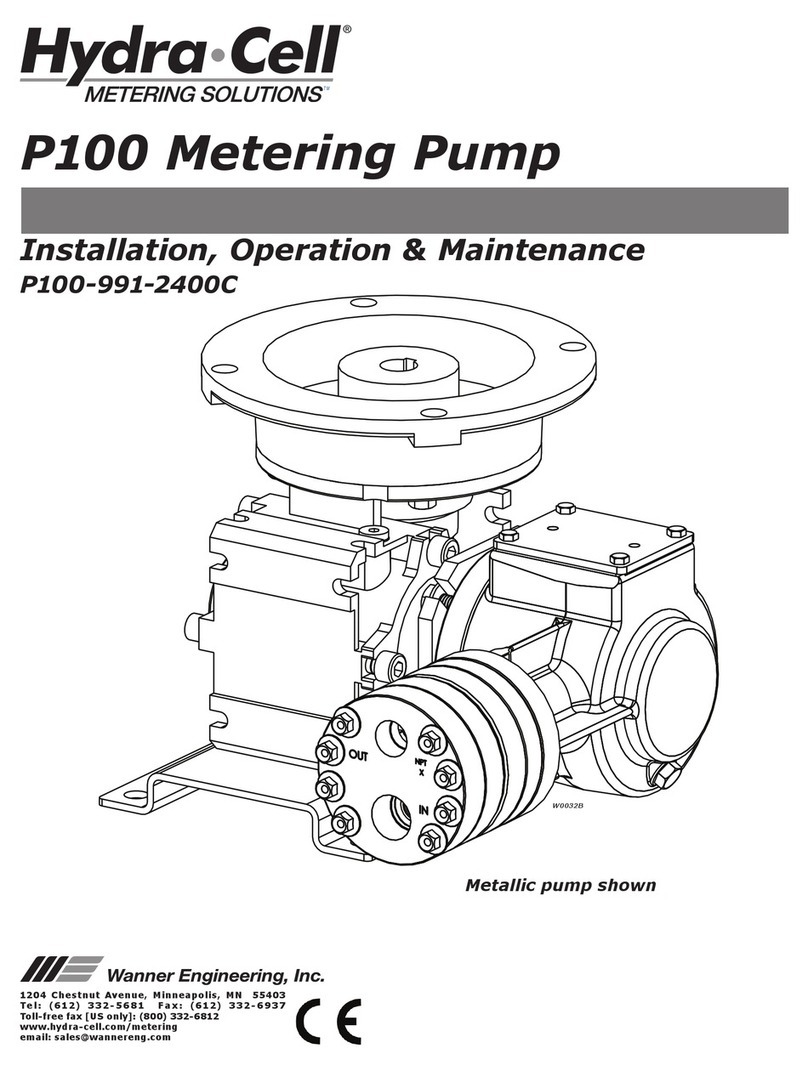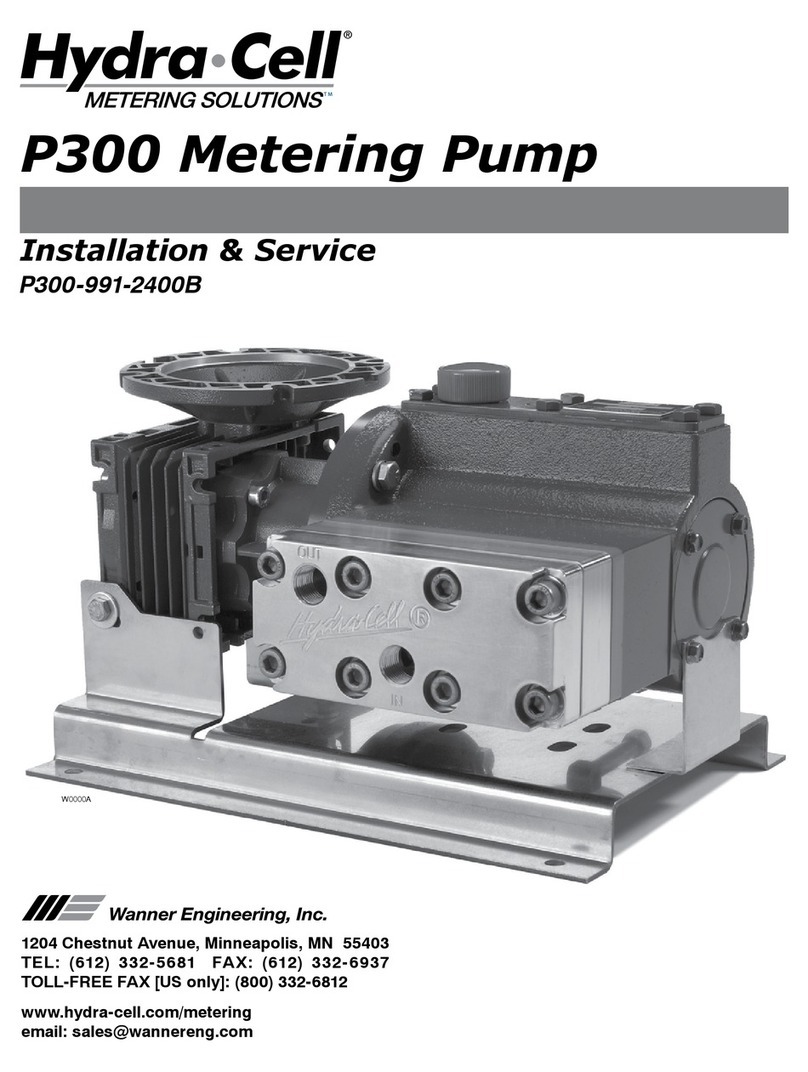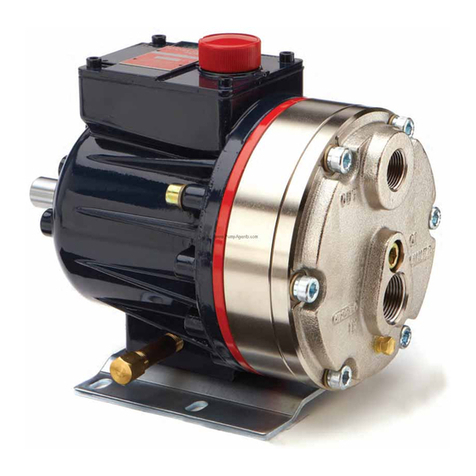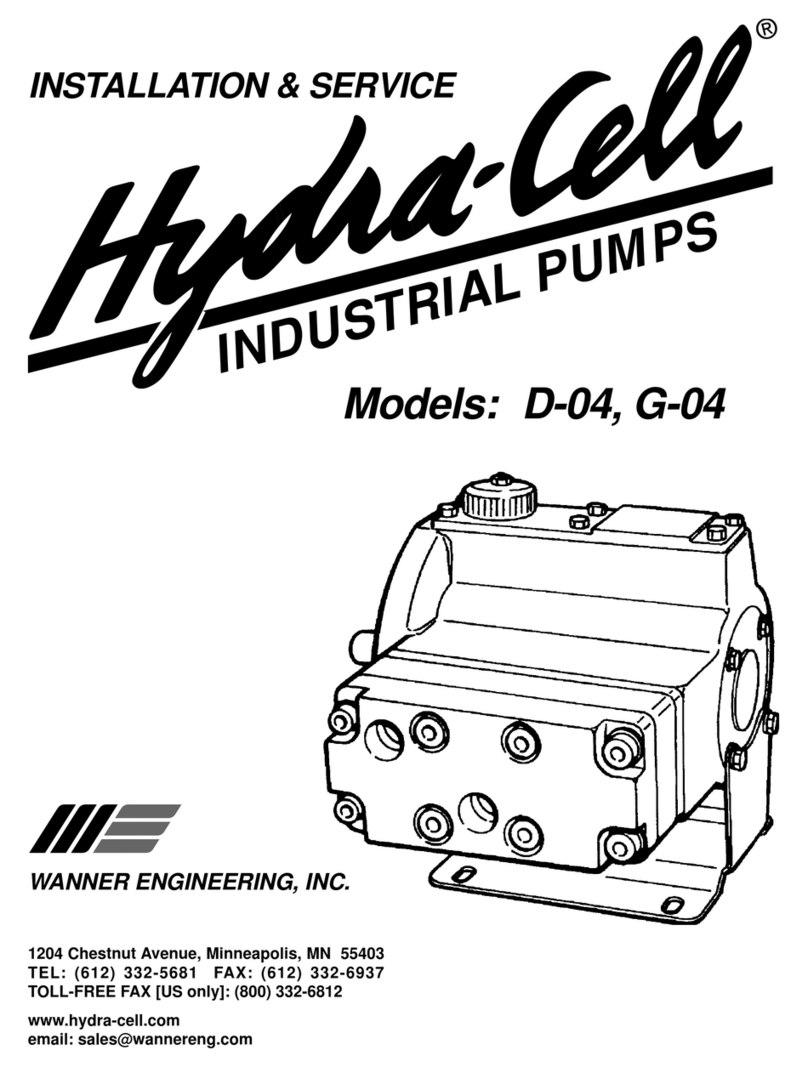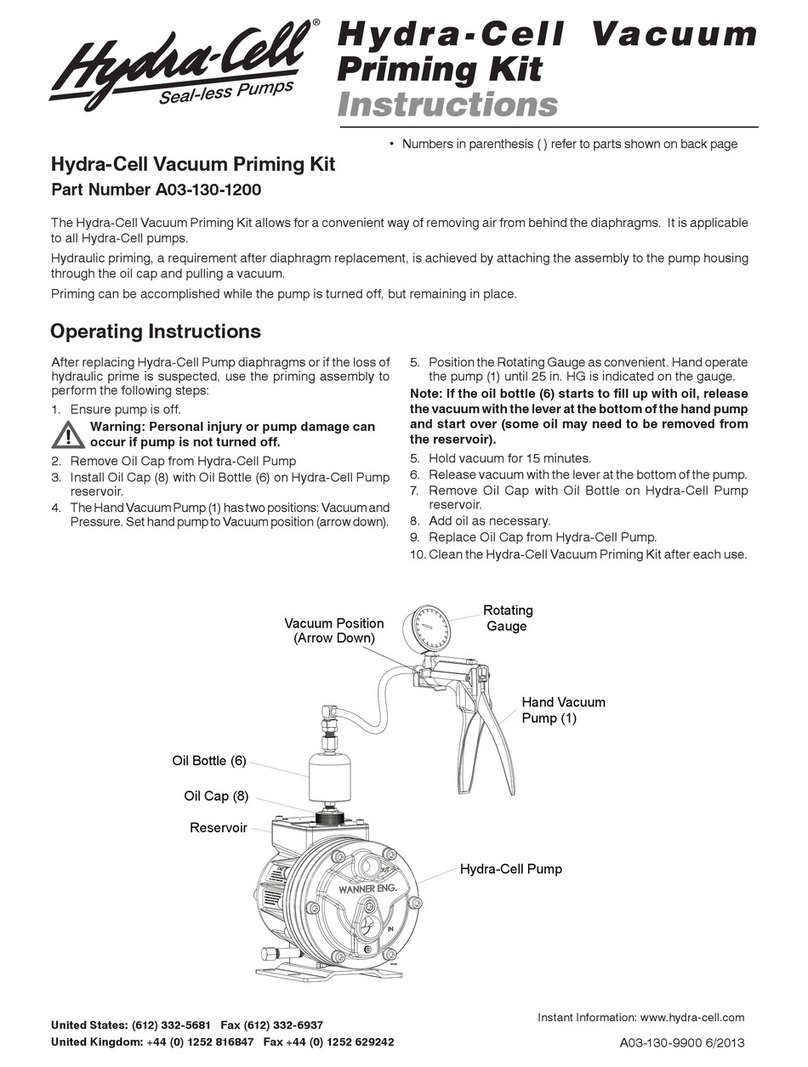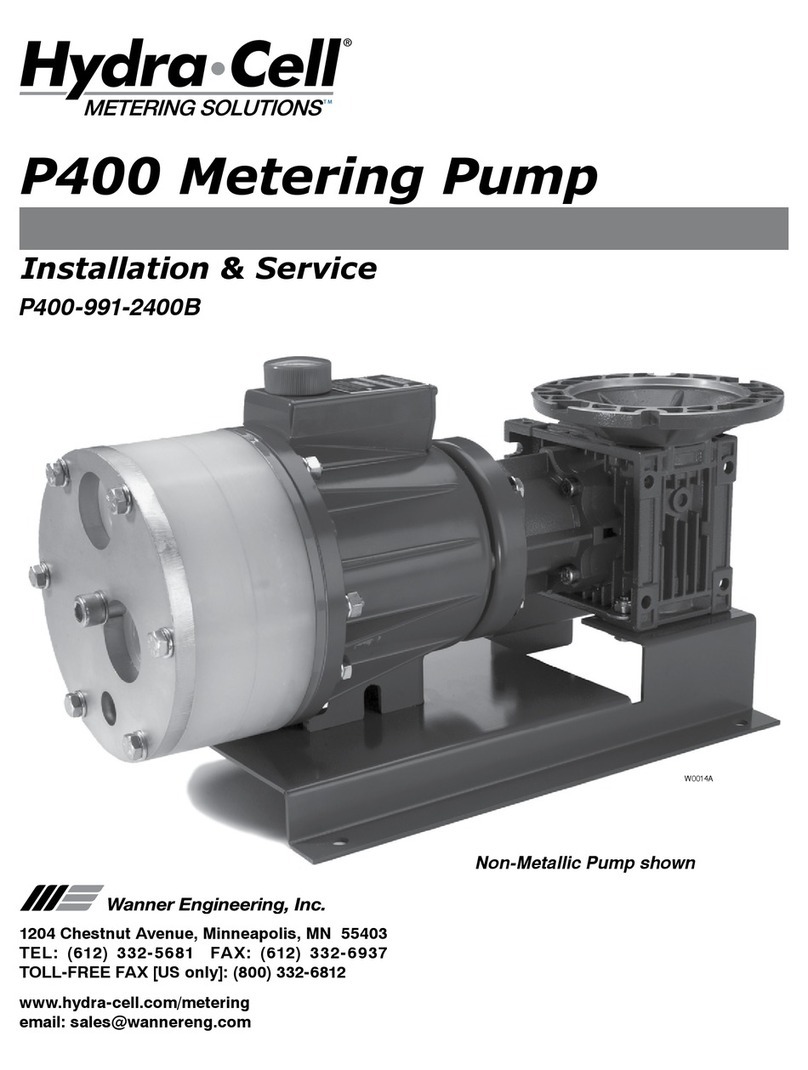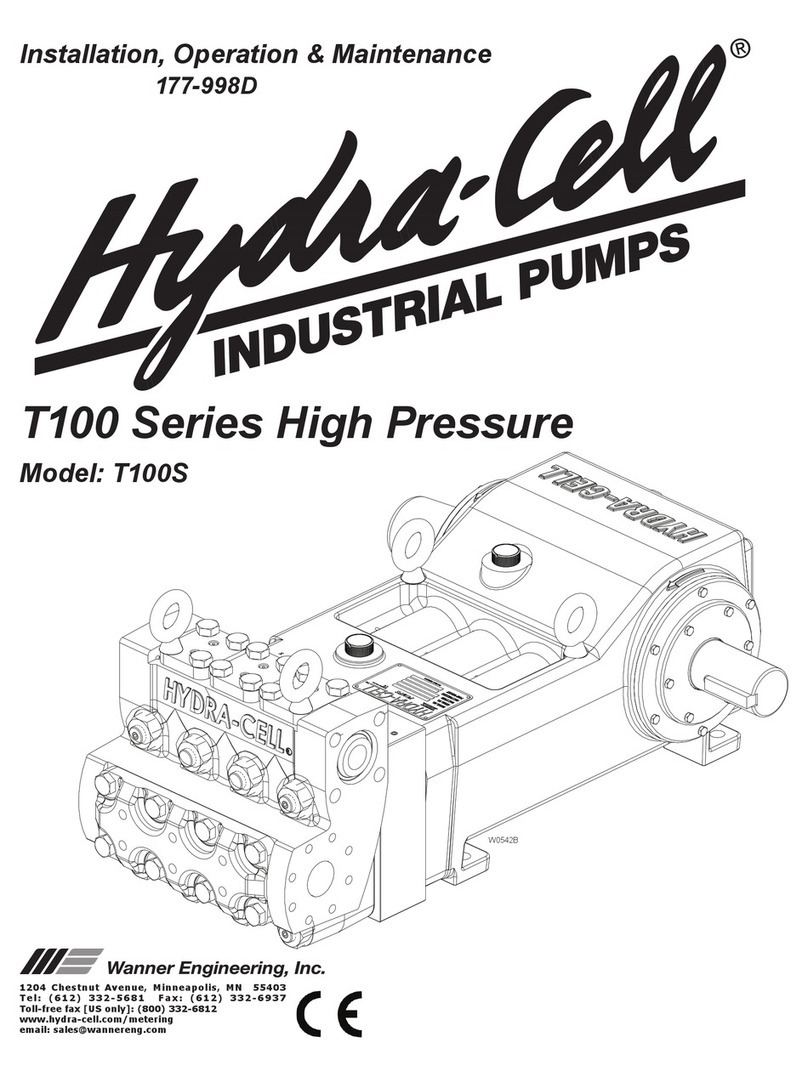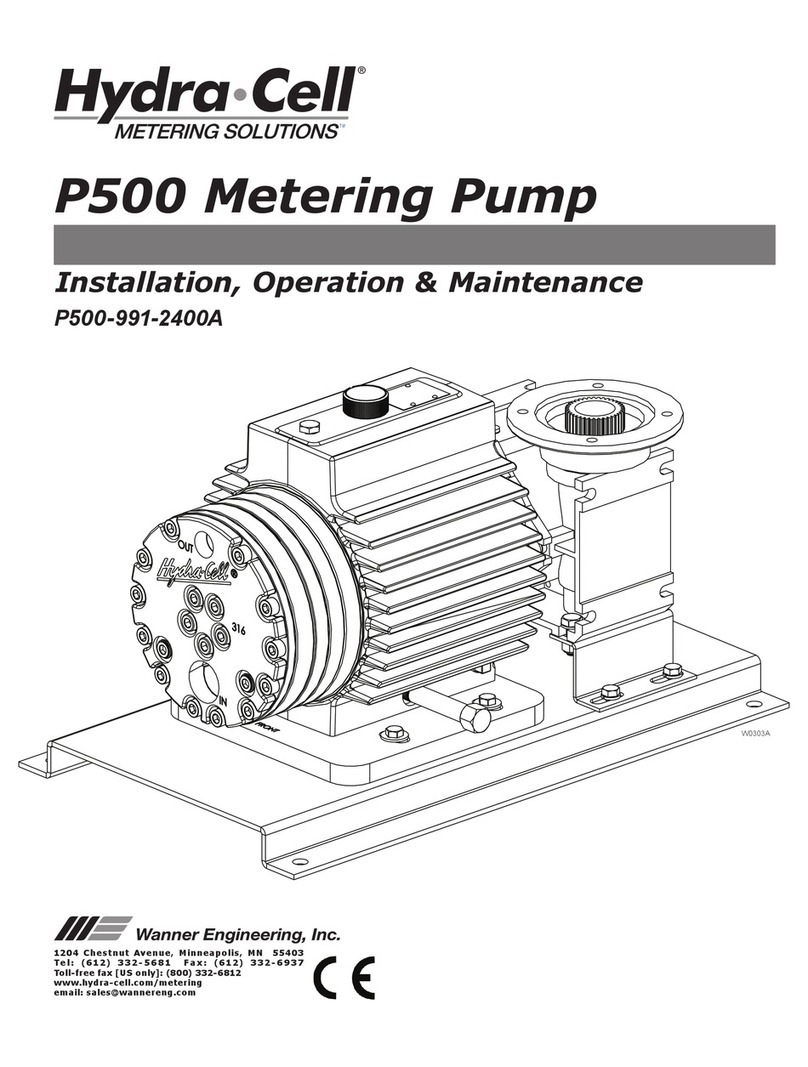
9P300-991-2400C
3. Inspect and Replace
Diaphragms (17)
a.Liftdiaphragm(17) byoneedge,andturnpumpshaft
(use the shaft rotator from the Wanner Tool Kit)
untildiaphragmmovesupto“topdeadcenter”.Thiswill
expose machined cross-holes in plunger shaft behind
diaphragm.
b. Inser ttheplungerholdertoolthroughoneofthemachined
cross-holes,toholdthediaphragm(17)up.(Don’tremove
tooluntilnewdiaphragmisinstalledinstepfbelow.)
c. Unscrewthediaphragm.Usea5/16 -in.(8 -mm)open- end
wrench,andturncounterclockwise.
d.Inspect diaphragm carefully. A damaged diaphragm
generallyindicatesapumpingsystemproblem.Replacing
diaphragmonly,willnotsolvethelargerproblem.Inspect
diaphragmforthefollowing:
• Small puncture.Usuallycausedbysharpforeignobject
inuid.
• Diaphragm pulled away from metal insert. Usually
causedbyexcessiveinletvacuum,orbyoverpressurization
ofpumpinlet.
• Outer diaphragm bead extruded.Usuallycausedby
overpressurizationofpump.
• Diaphragm becoming stiff and losing flexibility.
Usuallycausedbypumpinguidthatisincompatiblewith
diaphragmmaterial.
• Cut diaphragm convolute. Usually caused by
excessiveinletvacuum.
CAUTION: If a diaphragm has ruptured and foreign
material or water has entered the oil reservoir, do
not operate the pump. Check all diaphragms, then
ush the reservoir completely (as outlined below)
and rell it with fresh oil. Never let the pump stand
with foreign material or water in the reservoir, or with
the reservoir empty.
e.Cleanawayanyspilledoil.
f. Installdiaphragm(17)andtightento10in-lbs(113N-cm).
g.Repeat above inspection procedure with other two
diaphragms(17).Replaceifnecessary.
4. Flush Contaminant from
Hydraulic End
(only if a diaphragm has ruptured)
a.Remove the brass cap (60) and allow all oil and
contaminatetodrainout.
b. Fillreservoirwithcompatiblesolvent.Manuallyturnpump
shafttocirculatecompatiblesolventanddrain.Usethe
shaftrotatorprovidedinWannerToolKit(PartNo.A03-
175-1106).Disposeofcontaminateduidproperly.
CAUTION: If you have an EPDM diaphragm, or if food
grade oil is in the reservoir, do not use kerosene or
solvents. Instead, ush with the same lubricant that
is in the reservoir.
c. Repeatstepbushingprocedure.
d.Fillreservoirwithfreshoilandmanuallyturnpumpshaft
tocirculateoil.Drainoil.
Note: P Series replacement parts kits (complete kits
and diaphragm kits) include the correct oil for each
specic P Series pump conguration.
e.Rellreservoirwithfreshoil.Ifoilappearsmilky,thereis
stillcontaminantinreservoir.Repeatstepscandduntil
oilappearsclean.
5. Prime Hydraulic Cells
a.Ifnecessary,withpumphorizontal,llreservoirwiththe
correctHydraoilforapplication.
Note: P Series replacement parts kits (complete kits
and diaphragm kits) include the correct oil for each
specic P Series pump conguration.
b.Airbehindthediaphragmmustbeforcedoutbyturning
shaftandpumpingpiston.Anyairinthehydraulicend
willcausethepumptohavelossinowandre-priming
willbenecessary.
c. Turnshaf tuntilbubble-freeowofoilcomesfrombehind
diaphragm. Use the shaft rotator provided in Wanner
Tool Kit (Part No. A03-175-1106). Make sure oil level
inreservoirdoesn’tgettolow.Addoilasnecessary.If
oilgetstoolow,airwillbedrawnintohydraulicsideof
piston.
d.Whenoilisbubble-free,refreshoilreservoir.
c. Wipe excess oil from the diaphragm plate (18) and
diaphragms(17).
6. Reinstall Valve Plate (12) and
Manifold (3)
a.Reinstallvalveplate(12),withvalveassembliesinstalled
as outlined above, onto diaphragm plate (18) and
alignmentpins(29).
Tighten two socket-head capscrews (14) evenly and
snugly to compress outer diaphragm beads and hold
valveplate(12)inplace.
b. ReinstallO-rings(4)onfrontsideofthevalveplate(12).
Use petroleum jelly or lubricating gel to hold them in
place.
c. Reinstallmanifold(3)ontovalveplate(12).
d. Insertallcapscrews(1),withwashers(2),aroundedgeof
themanifold,andalternatelytightenoppositeboltsuntil
allaresecure.Torqueto50ft-lbs(70N-m).
e.Recheckallboltsfortightnessandpropertorque.
P300 Fluid End Service (Cont’d)

